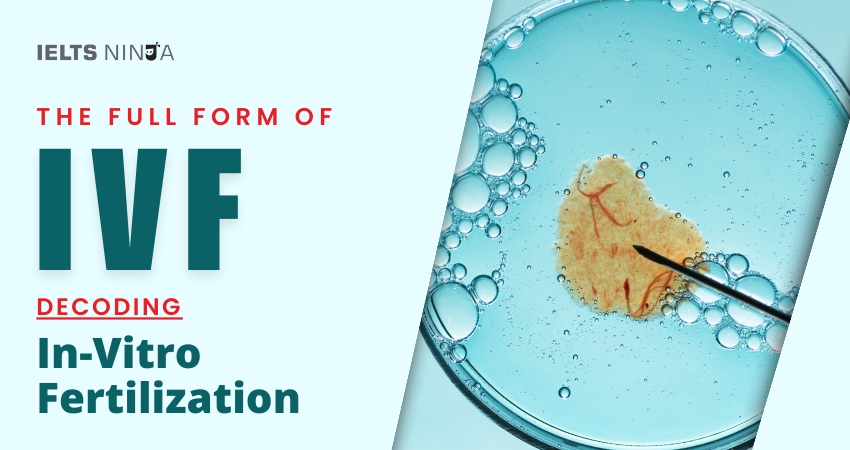In the field of reproductive medicine and fertility treatment, the full form of “IVF” stands for “In Vitro Fertilization.” IVF is a complex and widely used assisted reproductive technology (ART) that helps individuals and couples overcome infertility by facilitating fertilization outside the human body. In this comprehensive guide, we will explore the details of IVF, its procedures, success rates, and its significance in the context of fertility treatment.
What is IVF?
In-Vitro Fertilization (IVF) is a medical procedure that involves the fertilization of an egg (ovum) with sperm outside the human body, typically in a laboratory setting. IVF is a solution for individuals or couples who face difficulties conceiving naturally due to various factors, including blocked fallopian tubes, low sperm count, ovulation disorders, or unexplained infertility.
Key Aspects of IVF
Stimulation of Ovaries:
In an IVF cycle, the woman’s ovaries are stimulated using fertility medications to produce multiple eggs. This step is crucial for increasing the chances of successful fertilization.
Egg Retrieval:
Once the eggs reach a mature stage, a minor surgical procedure called “egg retrieval” is performed. A thin needle is used to extract the eggs from the woman’s ovaries under ultrasound guidance.
Sperm Collection:
On the same day as egg retrieval, the male partner or a sperm donor provides a semen sample. In some cases, advanced techniques like intracytoplasmic sperm injection (ICSI) may be used to assist fertilization if there are sperm-related issues.
Fertilization:
In the laboratory, the retrieved eggs are combined with sperm to facilitate fertilization. The fertilized eggs, now called embryos, are closely monitored for their development.
Embryo Transfer:
Once the embryos reach an optimal stage of development, one or more of them are selected for transfer into the woman’s uterus. This is typically done through a thin catheter and does not require surgery.
Implantation and Pregnancy:
If the embryo successfully implants in the uterine lining, pregnancy occurs. Additional embryos may be frozen for future use if needed.
Success Rates:
IVF success rates can vary based on factors such as the woman’s age, the cause of infertility, and the quality of embryos. Success rates are typically higher in younger women.
Additional Techniques:
In some cases, additional techniques like preimplantation genetic testing (PGT) may be used to screen embryos for genetic abnormalities before transfer.
Also Read: Best online IELTS coaching & training academy
Significance of IVF
In-Vitro Fertilization (IVF) holds immense significance in the field of reproductive medicine and family planning:
- Overcoming Infertility: IVF offers hope to individuals and couples who struggle with infertility, providing them with the opportunity to have biological children.
- Diverse Patient Groups: IVF serves a wide range of patients, including those with female infertility issues, male infertility issues, LGBTQ+ couples, and single individuals who desire parenthood.
- Genetic Screening: Techniques like PGT allow for the selection of healthy embryos, reducing the risk of genetic disorders in offspring.
- Egg Freezing: IVF allows women to freeze their eggs for future use, preserving their fertility for when they are ready to start a family.
- Research and Innovation: Ongoing research in IVF continues to improve success rates and make fertility treatments more accessible.
- Family Building Options: IVF provides options for family building, including surrogacy, egg donation, and sperm donation, allowing individuals and couples to build their families in unique ways.
Conclusion
In-Vitro Fertilization (IVF) is a groundbreaking medical procedure that has transformed the lives of countless individuals and couples struggling with infertility. Its success in helping people achieve their dream of parenthood underscores its significance in modern medicine. As technology and research in this field continue to advance, IVF remains a powerful tool for addressing fertility challenges and expanding family-building possibilities.








